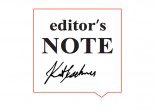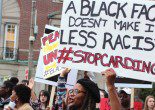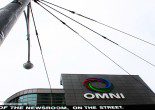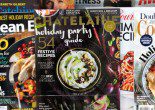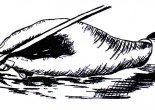Making It Hot for the Sun
The charge was 'racism.' The countercharge was 'censorship.' And when the opposition grew as fast as the Little Paper itself, both sides ended up shedding a lot more heat than light
For many that ritual includes a scanning read of the morning paper, snapped open as they settle into seats. The Globe and Mail and The Toronto Star (a fairly recent competitor in the morning market) have their devotees, but it is The Toronto Sun that dominates; after all, with its tabloid size and quick-read stories, the Sun was designed for transit riders. The Sun confirms what great weather we’re having in its page-one box, and also confirms what a great season the division-leading Toronto Blue Jays are having; they beat the Seattle Mariners again last night. True to its style and format, the Sun flips through the news as quickly as its readers flip through its pages. Besides, it’s midsummer, the traditional slow-news period. Perhaps the most memorable story on this morning, July 24, 1985, is the announcement on page 59 that the original formula Coca-Cola, recently supplanted by “new Coke,” is coming back as “Coke Classic.”
But on page 12 on this Wednesday morning, a major story-a story about the Sun-is beginning to evolve. McKenzie Porter is commenting on the apartheid issue. “If South Africa gave the vote to every black today,” the 74-year-old columnist writes, “it would bring about the destruction of the agriculture, industry and commerce that are essential to the eventual emancipation of the supposedly oppressed majority.” It’s vintage stuff for Porter, a former Fleet-Streeter who has plied his journalistic skills in Canada since 1948-at Maclean’s, the Toronto Telegram, and now the Sun. Abolishing apartheid, he continues, “would result in the passage of power into the hands of politicians with but a veneer of civilization,” and adds that the “average South African black, though .he may be in a collar and tie, still embodies some vestiges of a recent Stone Age past.”
It’s typical McKenzie Porter fare-an outrageous column by an often outrageous columnist. The Sun’s editorial, a few pages earlier, also deals with apartheid-“the disgrace of apartheid.” Still, it is considerably more qualified than comments appearing in “liberal press” editorials, focusing on “class warfare demanded by Marxists and liberals blinded by Marxism.” The Sun also argues that the white South Africans who “see themselves as an island of civilization amid chaos” are, in fact, correct.
The reaction from Toronto’s 100,000plus black community was swift and intense. The attack (or counter-attack) was led by Leroi Cox of Toronto’s Anti-Apartheid Coalition. He fired off a series of letters denouncing “the recent stream of racist articles, editorials and columns on South African issues emanating from. .. The Toronto Sun.” Copies went to Sun publisher Paul Godfrey, Ontario Premier David Peterson and his attorney-general, Ian Scott, the provincial multicultural directorate and a dozen media outlets. In his letter to Godfrey, Cox defined the fundamental issues that would fascinate Toronto-and especially Toronto media watchers-for months. “… a free and unfettered press is vital to democratic society,” Cox told Godfrey. But, “there should be a sense of responsibility on the part of those privileged to wield power and influence in the media.” Freedom vs. responsibility. And from that, specific battle lines were drawn, and a long, unpleasant public argument began. Chinese, East Indian and black minority groups became embroiled. The Ontario Press Council was approached. But the new focal point was Mayor Art Eggleton’s Committee on Community and Race Relations which, along with the Sun, would take the issue beyond freedom vs. responsibility and focus on a more contentious question: Which is the greater evil, racism or censorship?
On Sept. 10, in a dingy beige committee room in Toronto’s twin-towered city hall, the Mayor’s race relations committee meeting began at 7:30 sharp, with seven of its nine members present. The committee, formed five years ago “to promote equal treatment of racial and ethnic groups in the City of Toronto,” has in the past dealt with such issues as housing discrimination, police department recruitment of minorities and minority cultural grants. On that September night, it had granted hearings to citizens with similarly diverse interests. Dr. Lilian Ma and the Chinese-Canadian National Council were seeking federal government compensation for past discrimination against Chinese immigrants. In a separate complaint, other Chinese Canadian citizens wanted an apology from the film company MGM for the “negative portrayal of the Chinese community” in the movie Year of the Dragon. But the big story of the night revolved around Leroi Cox and Yola Grant of the Anti-Apartheid Coalition. They wanted the City of Toronto to stop endorsing events with the Sun and to stop all city advertising in that newspaper. They wanted the Mayor’s committee to call a press conference to condemn the Sun’s “racist policy” and to write a letter to Sun publisher Paul Godfrey expressing disapproval of specific articles. They wanted the Mayor’s committee to ask all city aldermen to cancel their Sun subscriptions. And they wanted the committee to endorse the Anti-Apartheid Coalition’s boycott of the paper.
At this point, however, the committee was only willing to go so far: it would write to the Ontario Press Council and the Ontario Human Rights Commission “expressing profound concern about the apparent racial bias in The Toronto Sun editorial and columns by McKenzie Porter;” and it would also ask Attorney-General Scott to comment on the possibility of charges against the Sun under Canada’s hate literature laws. But before it would take any further action, it wanted to have words with Paul Godfrey.
The meeting with Godfrey was scheduled for Oct. 8, but before it took place, Barbara Amiel wrote a column for the Sun which further inflamed the Anti-Apartheid Coalition, and drew other minority groups into the fight. The column, entitled “Straight Talk on Blacks,” claimed it was increasingly difficult for journalists to write about minority groups because they had become “sacred cows.” “One cannot say that these awful riots [in Brixton] are caused by black people who seem to be sub-human in their utter lack of civility,” Amiel wrote. “One must deny the evidence of one’s senses and try to blame whites or goldfish.” After her column appeared, four other groups, including the Urban Alliance on Race Relations, involved themselves in the argument. “The argument highlighted for a lot of people that it wasn’t just the issue of apartheid that was the problem; it was the Sun’s whole way of writing about minorities,” says Alliance president Carol Tator.
On Oct. 8, one week after Amiel’s column inadvertently turned up the heat, the Mayor’s committee arrived at the Sun’s King Street seat of power, ready to speak with Godfrey. Godfrey was planning to discuss only the columns by Porter and Amiel, but the committee was carrying a surprise for him-a 106-page package of submissions from various minority groups, the Ontario Human Rights Commission and a number of individuals, all dealing with alleged racism in the Sun. Included in the package were photocopies of 62 Sun stories, columns, cartoons, editorials and letters to the editor. There was also a 20page submission from a Native Canadian group, outlining a judgment made against The Winnipeg Sun (no relation) for running an article offensive to Native Canadians.
The package was hastily assembled at the request of the Mayor’s committee by one of its members, Alok Mukherjee. He used clippings which the Anti-Apartheid Coalition had copied from the Human Rights Commission’s files and combined them with clippings donated by the Urban Alliance. Mukherjee also wrote a nine-page conclusion to the package by examining words and phrases which appeared in Sun editorials and in columns by Christie Blatchford, Douglas Fisher, and Claire Hoy as well as McKenzie Porter and Barbara Amiel. He arranged their comments under headings such as Racism, Black People, and Immigration, then compared descriptions employed for “the West [as in the western world] and Canada” with those used for “minorities,” such as “civilized” vs. “stone age culture,” and “democratic” vs. “savage.” Mukherjee then concluded that the Sun “has propagated bias and prejudice against specific groups of people on account of their race, ethnicity or religion.”
The Sun would later protest the unscientific way in which the analysis was done, but at that moment, Godfrey just accepted the package from the committee. The committee and Godfrey agreed to meet once again, after the publisher had time to read and digest the report. That’s how it was left. But at 7:30 that same night, the rules suddenly changed. The committee re-assembled in the same beige room at city hall. The Anti-Apartheid Coalition was there, the Urban Alliance was there, the Jamaican-Canadian Association was there, the Black Business and Professional Association was there, and the Chinese-Canadian National Council was there. The committee heard from nine speakers and then reviewed the seven requests made by the Anti-Apartheid Coalition at the previous Sept. 10 committee meeting. Then, without reference to the fact that Godfrey had not yet had time to react to the package of accusations and without mention of the censorship question, the committee voted to urge city council to withdraw all city advertising, about $42,000 a year, from the Sun-if the Sun didn’t indicate it was “aware of the concerns of the visible minority community” within 30 days.
Committee member Sol Littman, a former journalist and better known now as a Nazi hunter (with the Simon Wiesenthal Center) would continue to defend the committee’s actions. “It was a question of the best strategy,” he says. “How do you get them to pay attention if there are no consequences for not listening?”
The Sun did listen. It listened and was infuriated by what it heard. In response to the committee’s threat, the Sun came back with an editorial on Oct. 10 bringing the issue dramatically to the public’s attention. The editorial was the first volley in a reheated war of words that eventually prompted an outpouring of opinions from Sun readers and staffers, and editorial reactions from The Globe and Mail, The Toronto Star, and one of Toronto’s ethnic newspapers, Share. The Sun editorial read, in part: “We are appalled and offended at the actions of the Mayor’s committee [which is] charging this newspaper with racism. [We will not] be influenced by a handful of people who have their own private agenda of hate against this paper. Are we being provocative? No, we’re provoked.”
So was Mayor Eggleton-provoked that is-when he read the editorial. He wrote a letter back to the Sun, saying the committee had never accused the Sun of being racist, nor had it tried to tell the paper what to publish. The Sun ran the letter in a section headlined: “This is a sampling of letters after Mayor Eggleton and his race relations committee accused us of racism and voted to have City Council impose sanctions.” The Sun also printed letters from its readers, supporting the newspaper’s stand by an 8-1 ratio. Many of the letters pointed to the undemocratic nature of the committee’s threat, a theme echoed and re-echoed in Sun columns and editorials which followed. Sun contributor Dick Smyth wrote that the Mayor’s committee’s actions “fly in the face of press freedom.”
McKenzie Porter compared the committee’s actions to the Spanish Inquisition. Reaction was not confined to the Sun, either. Toronto Star ombudsman Rod Goodman wrote: “the implication that well-meaning governments should be able to tell. ..the newspapers what information should be published is ominous.” And two weeks later, The Globe and Mail entered the arena, with a story headlined, “Sun sees freedom of the press as issue.” (Implying, Barbara Amiel would say in her Maclean’s column, that the Globe did not.) The Globe’s inclusion of the names of the Sun’s “offending” columnists sparked another barrage of words from the Sun. Both Christie Blatchford and Ted Welch, whose names were mentioned by the Globe, wrote columns denouncing the committee’s tactics. Blatchford called the Mayor’s committee’s threat “blackmail” and Welch concluded that “there’s no point talking as long as they’re holding a gun to our head.”
In an editorial which appeared on Nov. 26, The Globe and Mail supported the Sun’s reaction to the committee’s threat. Opening with the quote attributed to Voltaire, “I disapprove of what you say, but I will defend to the death your right to say it,” the Globe argued that advertising “is not a legitimate club to swing at the Sun.” This reaction was common to that of many outside journalists. While generally disapproving of the opinions expressed by the Sun, they found them less dangerous than the suggestion that the paper should be censored. As Murray Campbell, media issues writer for the Globe, says, “I see the problem from this side of the desk, too. I don’t want anyone coming to me and saying ‘We don’t like the way you’re writing about this subject and here’s a law to stop you’.”
Not every journalist in town chose the anti-censorship side however. Arnold Auguste, publisher of the ethnic newspaper Share, says that while “The Toronto Sun and its writers may claim the right to free speech, we are claiming the right to be protected from hate literature. And the right of the many must outweigh the right of the few.”
While each side became more firmly entrenched after the Mayor’s committee put its Oct. 8 ultimatum to the Sun, nothing official or even semi-official happened until seven weeks later. Municipal elections intervened, extending the Mayor’s committee deadline on the Sun to at least indicate its awareness of minority community concerns.
On the night of Nov. 26, a highly charged crowd assembled at city hall for the committee’s next meeting. At 7:30, when the meeting began, Art Eggleton announced that he was concerned about the “tensions” arising over the resolutions passed by the committee at the Oct. 8 meeting. Heinsisted there was “room for dialogue” with the S’un and proposed that a subcommittee be formed to do the dialoguing. By 7:39, the subcommittee, consisting of Eggleton and committee members Hugh Morris, Martin Applebaum and Trevor Hitner was struck. Then Eggleton moved on to the next item on the agenda. The anticipated controversy failed to materialize, so most of the spectators, along with the press, packed up and called it a night.
The issue might have stayed quiet as Eggleton had hoped, if, on Dec. 12, the Urban Alliance hadn’t released a two month study encompassing eight years of Toronto Sun columns. The study, entitled Power without responsibility: The Press We Don’t Deserve, posed one fundamental question on Sun coverage: “Is there evidence of prejudice and racism in the representation of ethnic and racial minorities or in the presentation of issues that concern ethnic and racial minorities?” The $3,000 study, researched by York University student, Effie Ginzberg, answered its own question with a resounding “Yes.” “The sheer volume of stereotypes, defence mechanisms, racism. ..can leave no doubt.”
Since the study analysed the Sun articles using widely accepted sociological models, it was far more persuasive than the Mayor’s committee package, which relied solely on Mukherjee’s analysis. However, there was a major weakness in the York study too. As Ginzberg indicated on page eight of the 104-page report, there was a shortage of both time and money for the project. She therefore ana lysed specific Sun articles for evidence of racism, but did not study them in relation to the frequency with which they appeared in the paper. “Thus we cannot answer definitively whether or not The Toronto Sun presents stories and issues concerning non-whites fairly.”
This was a point that Sun editor John Downing would capitalize on when he and the Urban Alliance’s Carol Tator donned their armor for the next phase of the censorship vs. racism struggle. When the two appeared on CBC Radio’s Dec. 17 Media file, Downing downplayed the study as distorting the issue because it looked at only 62 of the 20,000 columns the Sun published during the eight years in question. He made the same point on Jan. 20, when he squared off with Urban Alliance’s Susan Eng, on Channel II’s talk show, Cheringlon. “We run 60 columns in a week,” Downing said. “They looked at 60 columns or editorials over a period of time stretching back to 1978. So it was hardly an in-depth study.”
In-depth or not, Downing argued that the study impinged on the S’un’s right to freedom of speech, because it implied that his newspaper should not be allowed to make negative comments about minorities, While the Sun’s “vivid and blunt” style may offend, he said, that didn’t mean the paper was racist. “The point we’re missing here today is that there is always somebody that doesn’t like what we’ve said,” Downingtold Eng. Earlier, on Media File, Downing had made the same point. He insisted that minority groups had not been singled out for negative comment by the Sun, and that just beca use they had been offended by some of the columns, that did not give them the right to have the paper censored. “Some of the editorials I write are offensive to the prime minister of Canada. Where do you stop once they start saying to us what language we can use? …As long as they start dictating the adjectives and the adverbs and the verbs, we’re all in trouble.”
In response to Downing’s vigorous defence of press freedom, the Urban Alliance denied it was trying to censor the press. In an interview, Tator said that she had not expected the Mayor’s committee to carry through with the withdrawal of city advertising, because it wasn’t Eggleton’s style. “The committee is very much influenced by the style in which the mayor works and since he likes to play the mediating role, they didn’t want to inflame the Sun further,” she said.
On Media File, Tator also said that the Urban Alliance’s current approach was to look for self:’monitoring by the Sun, Eng reiterated that approach on Cherington, arguing that since columnists already adapt what they write to match the voice of the publication, it wouldn’t be difficult for them to screen themselves for racist comments too.
“[The paper had] already made a decision about what is going to go out-whether it is tasteful, whether it maligns, whether it libels. One of the things we want them to look at is whether it hurts people.” The Urban Alliance’s move from strong advo- , cacy of censorship to a less polarizing call for self-screening was a good tactic. All along, a large part of the Sun’s defence had been that it was defending itself against censorship, and thereby striking a blow for press freedom. It can also be well argued, however, that the original gambit-asking the city to withdraw its $42,000-a-year advertising from the Sun and to disengage from any mutual promotion projects-was also a good tactical move. It forced the issue onto the public agenda and probably did influence the Sun. “On principle, I don’t like the idea of using advertising as a lever against editorials,” says Peter Desbarats, dean of the Graduate School of Journalism at the University of Western Ontario. “But with my knowledge of how news organizations work, it probably made quite an impression inside the Sun.”
And when it comes right down to it, what recourse did the minority groups have? Fighting a large metropolitan newspaper is like fighting city hall, except it’s harder to do. One possibility which was discussed and explored early on, was to go to the courts with a formal charge of printing hate literature under the Criminal Code (similar charges were brought against neo-Nazi Ernst Zundel last year). That pursuit was abandoned pretty quickly because, quite simply, a case could not be made.
Tator says that it was because of the words “willful intent” in the law: “Itmakesa hate literature charge very difficult to prove, so our lawyer advised us against it.” A civil action under Canada’s libel law was also ruled out because of wording: members of a defamed group must be personally identifiable for the law to apply.
So without legal recourse against the Sun, what options were left for the Urban Alliance and the other groups? There was the Human Rights Commission’s race relations division, which can hear complaints and forward them to the appropriate disciplinary bodies, but which has no real power over the press. “We have the power of ‘moral suasion’ only,” says a commission employee.
The Ontario Press Council has a bit more power. After it receives a complaint, it sets up a meeting between the complainant and the paper which ran the offending article. And after listening to both sides, the council makes a judgment, which the member newspaper is compelled to run. However, even if the press council decides that a complaint is justified, its powers are limited. It can only pass judgment on existing articles; the council cannot order a newspaper to change its editorial ways in the future.
In this case, which The Press Council describes as “the most difficult… in its 13Yz years,” the council supported “the Sun’s right to publish opinions however controversial or unpopular they may be.”
The council however did note that the dismissal of the complaint did not mean that it agreed with the opinions published in the Sun.
That was it for the “official channels.” The only options left were self-organized schemes. A reader boycott campaign was discussed, but for newspapers with high newsstand and low subscription sales (such as the Sun), boycotts are not generally effective. The Sun claims, for example, not to have been hurt by the Metro Labour Council’s five-year-long boycott of the newspaper. And as for a minority group boycott of the paper, the Sun says it had a record high number of sales the day after the Anti-Apartheid Coalition asked the Mayor’s committee to support a boycott against the paper.
Other suggestions have included “debunking” the stereotypes which appear in the paper. University of Toronto professor George Bancroft wrote a rebuttal to Amiel’s Sun column “Straight Talk on Blacks” called “Straight Talk on Barbara Amiel.” The piece, which appeared in the ethnic newspaper Share, challenged Amiel’s characterizations of blacks. Among other things, Bancroft refuted her point that there was a predominance of West Indian boys among pimps on Yonge Street. He said the reason there were mote black pimps and prostitutes in Toronto than there were in the ’60s and ’70s, was simply because there were more blacks in the city by the mid-’80s. Bancroft said that Amiel’s characterizations were not just wrong but, if challenged logically, could be disproven. He also suggested that it would be a good exercise for journalism school students to refute the Sun’s arguments and send the rebuttals to the Sun and to the city’s mainstream papers. When rebuttals such as his are printed only in the ethnic press, they don’t change many minds; it’s a case of preaching to the converted. What is necessary, Bancroft said, is to give the readers who might otherwise be convinced by the Sun’s arguments a chance to hear from the other side.
That presupposes, however, an acknowledgment of racism on the Sun’s part, and an acknowledgment that it does not already publish “the other side.” But the Sun steadfastly insists that it is not racist, and that its coverage is far from one-sided. Neither the Sun nor its organized detractors have really budged on the issue since it was set aflame last summer. The Mayor’s committee, having yanked in its collective head on the city advertising threat, was claiming in January that, thanks to its successful brokerage role, “substantial progress” had been made. Which, to be frank, is a dubious conclusion, drawn on the basis of a Jan. 22 letter from Paul Godfrey to the committee.
Godfrey wrote that the Sun would “continue” to be sensitive to community concerns and that its editors would “continue to be as vigilant as possible” in ensuring that the paper lives up to its own standards of good taste. Although he said that he would meet the community groups, that a senior Sun staffer would attend race relations workshops, and that the Sun would accept short articles from the community, Godfrey indicated that these weren’t concessions so much as continuations of an already established Sun policy.
Carol Tator of the Urban Alliance is inclined to believe that Godfrey’s insistence on the word “continues” is not as insignificant as the Mayor’s committee’s response would indicate. “It negates everything we have been fighting about for the past six months,” she said. However, Tator also said that she gave more weight to the Sun’s actions than to Godfrey’s words and observed that in the previous month-and-ahalf, December to January, there had been “a definite decrease in inflammatory writing about minorities in the Sun.”
So each group, while not claiming victory, certainly rejects the notion that it has been beaten. In the end, what has been accomplished is that the issues of racism and prejudice have been brought to the attention, not just of the Sun, but to the rest of the press and to the public. And as Desbarats says, the increase in awareness is a good thing. “We’re usually too damn busy to really look at the media, unless groups like this rub our noses in it. The more people make us look at ourselves, the better it is for all of us.”
Catherine Dowling was an Associate Editor for the Winter 2012 issue of the Ryerson Review of Journalism.







